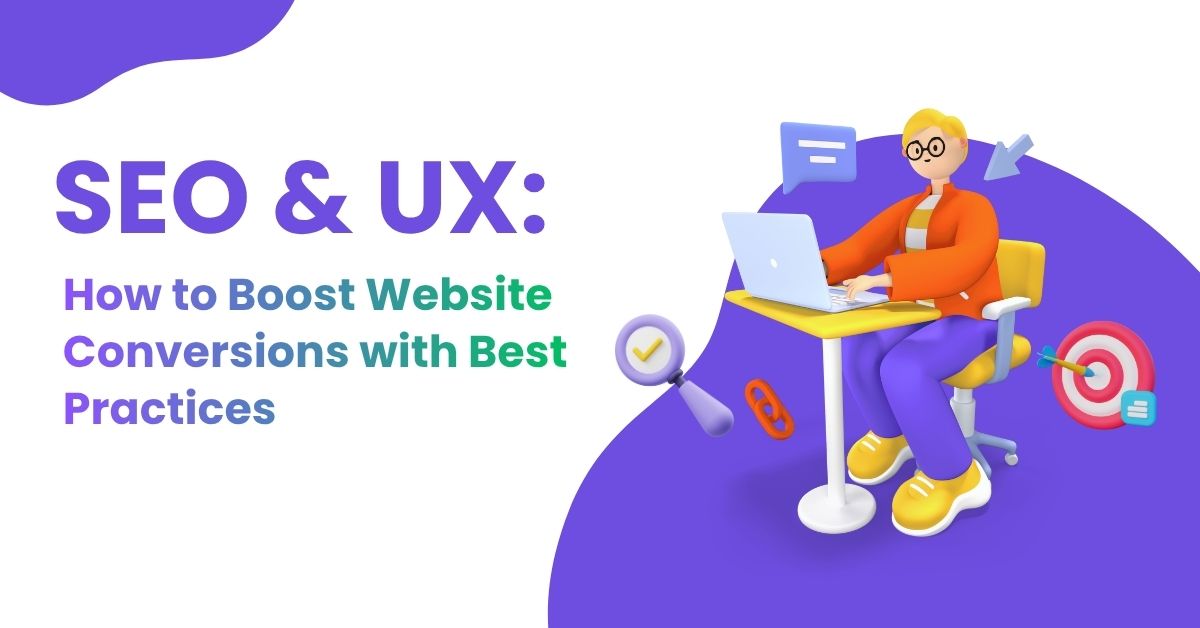Imagine your website as a conversation between your brand and your visitors. SEO is what helps people find your voice in the crowd, while UX determines how they feel once they start listening.
If your SEO is strong but your UX is weak, people might visit your site but leave disappointed. If your UX is great but no one can find you online, your efforts go unnoticed.
The real magic happens when SEO and UX work hand in hand attracting the right audience, keeping them engaged, and smoothly guiding them toward action.
In this blog, we’ll uncover how blending these two elements creates not just visibility, but real conversions.
- What’s the Difference Between SEO and UX?
- How Do SEO and UX Work Together?
- How Can SEO and UX Experts Improve Your Website?
- How Does SEO and UX Affect Conversions?
- Best Practices for Developing an SXO Strategy.
- Conclusion
What’s the Difference Between SEO and UX?
Think of your website as a team. SEO brings visitors by making your site easy to find on search
engines. It focuses on keywords, fast-loading pages, mobile-friendliness, and backlinks.
UX makes sure those visitors have a smooth and enjoyable experience. It asks: Can users navigate easily? Find what they need quickly? Enjoy the design?
SEO and UX form a powerful duo: one brings people in, the other keeps them engaged and encourages them to take action whether it’s signing up, making a purchase, or exploring more content.
How Do SEO and UX Work Together?
For a website to truly shine and deliver real results, SEO and UX must work together seamlessly, each enhancing the other to attract the right visitors and provide them with a smooth, enjoyable experience.
SEO is the sign outside that brings visitors in. UX is the layout and staff inside that make people want to stay and explore.
- If you focus only on SEO without UX, your site may get clicks, but visitors will leave frustrated, and this can hurt your rankings over time.
- If you focus only on UX without SEO, your site may look amazing, but hardly anyone will see it.
The real magic happens when SEO attracts the right audience and UX keeps them engaged.
Together, they create a website that’s not only visible but also effective at converting visitors into
loyal customers, increasing engagement, and driving real business results.
How Can SEO and UX Experts Improve Your Website?
SEO and UX experts know how to make your website both visible and enjoyable.
- SEO specialists make sure your website shows up in search results, attracts the right audience, and drives traffic through keyword optimization, backlinks, and fast-loading pages.
- UX professionals focus on the visitor’s journey, ensuring your website is easy to navigate, visually appealing, and encourages users to take action.
By combining these skills, experts help your website not only attract visitors but also engage them effectively, reduce bounce rates and increase the likelihood of conversions.
For professional support and advanced strategies, consider working with a digital marketing
agency that specializes in SEO and UX. This strategic approach ensures your site works smarter, delivering real results for your business.
How Does SEO and UX Affect Conversions?
If you want visitors to take action whether it’s making a purchase, signing up, or contacting you,
both SEO and UX play a crucial role.
- SEO brings the right audience to your site by making it discoverable in search engines,
- targeting the keywords your potential customers are searching for, and ensuring your pages load quickly and work seamlessly on all devices
- UX ensures those visitors enjoy their experience, find what they need easily, and are guided toward taking action.
When SEO and UX work together, your website doesn’t just attract more traffic it turns visitors into loyal customers, builds trust, and enhances overall satisfaction. This combination ultimately boosts your conversion rates and strengthens your online presence, making your website a powerful tool for growing your business.
Best Practices for Optimizing Your Website with SEO and UX
To get the most out of your website, focus on combining SEO and UX effectively:
- Organize content clearly: Make it easy for users to find what they need.
- Improve site speed: Fast-loading pages keep visitors engaged.
- Use mobile-friendly design: Most users browse on phones or tablets.
- Optimize for search engines: Use relevant keywords and backlinks to attract the right audience.
- Test and adjust: Monitor user behavior and tweak your design and content for better results.
Following these practices ensures your website not only attracts visitors but also guides them smoothly toward taking action, boosting conversions and overall success.
Conclusion
A successful website needs both SEO and UX. SEO brings visitors in, while UX keeps them engaged and encourages action. Together, they turn casual visitors into loyal customers.
Balancing the two ensures your site is easy to find, enjoyable to use, and effective at driving results.
Focus on best practices, keep improving, and your website will not just attract traffic it will convert it into real business success.




